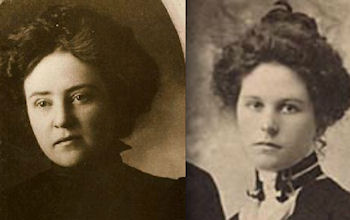
There have been countless stories written about the men in the American West, but very few about the women, yet there were quite a few who achieved varying levels of fame and notoriety. Of course, most of them were just hard-working, dirt poor and ill-educated sodbusters’ wives, women who slaved from dawn till dusk alongside their husbands, raised their children, and died, usually very young. Most of them (but not all) shared two common denominators – poverty and courage.

sodbusters
When Congress passed the Homestead Act in 1862 (smack dead in the middle of the Civil War, as it happened), for many people with no prospects it seemed like the gateway to a dream. All you had to be was 21 or older, home grown or immigrant, able to pay a small filing fee, and you were in business. Sort of. You were given 160 acres on the Great American Prairie, and if you managed to stay on it for five years it was yours. Sounded simple enough, but was it?
The prairie was pretty much treeless, and water was hard to find. It was stinking hot in summer and bleak in winter. The nearest town might be a week away in any direction. And that meant the nearest doctor as well. If, for instance, someone in the family got appendicitis, he or she would almost certainly die before a doctor could be reached. These were the days long before penicillin, so if anyone cut themselves badly and it became infected they, too, would probably die. Infected teeth usually had to be removed on the spot, without anaesthetic, of course. Because there was hardly any wood on the Great Plains, homesteaders made their huts out of sod;blocks of grass mixed with mud, hence the name ‘sodbusters’. The walls and roof were made of these blocks of dried mud, the floor was invariably dirt. In the summer bugs would hatch out of the blocks and drop into food, beds and hair. Food was scarce and bland. No refrigeration of any kind meant it often spoiled, so it had to be eaten as quickly as possible.
Lonely homesteaders were prey to roving marauders, especially during and after the Civil War. If these men came across an isolated homestead they would invariably murder any men present, pack-rape the women, and, (if there was a market in the area that could accommodate them), carry off any surviving children and sell them as slaves. Life and death was all a matter of chance. And then there was the ever present possibility of an Indian war breaking out at any time. Events unfolding elsewhere often meant a hideous death for homesteaders who were completely unaware that hostilities had even broken out. The cowardly attack on the peaceful Black Kettle camp at Sand Creek, Colorado in 1864, resulted in an estimated 3,000 homesteader deaths, as several tribes went on the warpath out of anger and frustration at the indiscriminate slaughter of mostly women and children at the camp. Most of the slain homesteaders probably had no idea why the previously peaceful Cheyenne suddenly turned on them. The women and children at Sand Creek no doubt died wondering the same thing.
Not all western women lived out on the prairie, however. There was always an over-abundance of men on the frontier, especially during land and gold rushes. Women adept in the art of providing ‘horizontal comforts’, especially if they happened to be even vaguely attractive, made a killing in the saloons and brothels that proliferated in all western towns. Mattie Blaylock, mentioned below, was one of them. She made money, but lived life in the fast lane, and still managed to die broke and alone. Cattle barons, on the other hand, built up massive ranches out west. In most cases they did so by first ‘cleaning out’ the local Indians, and then doing the same to sodbusters, farmers and sheepmen. Anyone hunting or building fences on ranch land did so at their peril. As these feudal lords created their dynasties they acquired wives and daughters who became hardy, confident frontier women. Anne Bassett was one such woman.
Anne Bassett (1878 – 1956)

Anne Bassett Etta Place
Anne’s parents owned a ranch at Browne’s Hole near the Wyoming, Colorado and Utah border. It was a remote area and home to many outlaws and other individuals who led less than completely legal lives. Butch Cassidy and his Wild Bunch were frequent visitors to the ranch and were known to court both Anne and her sister Josie around the turn of the 20th century. There has even been speculation that Anne and Etta Place, the girlfriend of Harry Longbaugh (the Sundance Kid), were one and the same. There is definitely a strong resemblance in their photographs, and Etta dropped from history quite suddenly around 1900.
The Bassett ranch was actually run by Anne and her mother, Elizabeth. Mr Bassett was not an authoritative figure. At the time, several cattle barons were intent on taking over Browne’s Hole and the surrounding areas. Rustling took place on both sides and a feud soon developed between the Bassett women and the owner of the Two Bar Ranch. When rumours began to circulate that Anne (now running the ranch) had been deliberately stampeding Bar Two cattle over cliffs, the Bar Two people hired professional killer Tom Horn to infiltrate the area and ‘take care of things’. A shifty cowman named Ned Huddleston moved into the Browne’s Hole region, changed his name to Isom Dart, and took up with Anne. He was 50 and she just 21, but they shared a common interest in that neither had any time for the Two Bar mob. Horn sent Dart a written warning, telling him (and other ranchers) to move on or suffer the consequences. In what can only be described as a lousy career move, Isom ignored the warning and carried on about his business. Horn shot him dead on 3 October 1900.
In a bizarre turn of events, Anne up and married a Mr H. Bernard, the manager of the Two Bar! This did not go over too well with his bosses who fired him on the spot. The union lasted six years. Later still, Anne was captured, tried for rustling, and acquitted. Eventually, she married again and settled down in south-western Utah where she lived out the remainder of her life in peace and relative legality. She passed away in 1956. Was she really Etta Place? No-one knows for certain. The resemblance is strong, but most historians think this is wishful thinking. Etta disappeared from history around the time Butch and Sundance were presumed killed in Bolivia. There was even talk that she died along with them in the gunfight with police troopers, but that, too, is pure speculation. Romantics like to think that she, Butch and Sundance came back to Browne’s Hole and lived out the rest of their lives anonymously and untroubled. Butch’s sister vowed until her dying day that he, at least, returned to Wyoming.
Mattie Blaylock (1850-88)
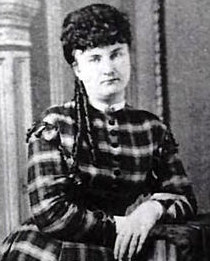
Mattie Blaylock Earp
If you have seen the 1993 movie Tombstone, you may have heard of this rather tragic woman of the West. In the film (and in real life) she was the ‘common-law’ wife of the legendary peace officer Wyatt Earp. Born in Wisconsin, but raised in Iowa, Mattie hot-footed it out of home when she was 16, made a bee-line for Kansas, and became a prostitute in a couple of towns before arriving in Dodge City. At 23 she met Wyatt, not altogether surprising considering he was running the prostitution racket in Dodge at the time. They were soon lovers.


Wyatt Earp Kurt Russell as Wyatt in Tombstone (1993)
The arrangement was a cosy one. They lived and worked together, Wyatt gambling and running the rackets, Mattie plying her trade as a hooker, yet happily calling herself Mattie Earp. In 1879, they moved to Tombstone, Arizona, the centre of the silver boom. Mattie apparently suffered from severe headaches and began taking ever increasing amounts of laudanum, the accepted pain killer of the day, to combat them. Soon she became addicted.

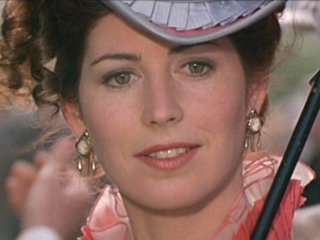
Josephine Marcus Dana Delany as Josephine in Tombstone (1993)
In March 1882, Morgan Earp was murdered in Tombstone. Wyatt ordered his brother Virgil and the Earp womenfolk (including Mattie) onto a train with his body, and they all moved back to California. Mattie’s hopeless addiction to laudanum had started to irk Wyatt, so he was glad to be rid of her. Besides, he had taken up with Josephine Marcus whom he would later marry. He had promised Mattie he would send her a telegram when it was safe for her to return to Tombstone, but he never did. Later, she moved back to Arizona and returned to prostitution. On 3 July 1888, she swallowed a lethal dose of laudanum and was dead at 37. Josephine married Wyatt and they remained together until his death in 1929. She died 15 years later.
Martha ‘Calamity Jane’ Cannary (1852-1903)
Most people who are familiar with the name, ‘Calamity Jane’, know her because of Doris Day’s portrayal of the lady in the 1953 musical of the same name. It scarcely goes without saying that Martha Jane was nothing like Doris. She wasn’t blonds, she wasn’t pretty, she wasn’t a singer or dancer, and she wasn’t Wild Bill Hickock’s girlfriend either. She looked and dressed like a man, swore like a mule-skinner only worse; she was drunk a lot of the time, gambled like there was no tomorrow, and worked as a prostitute to support her habits.
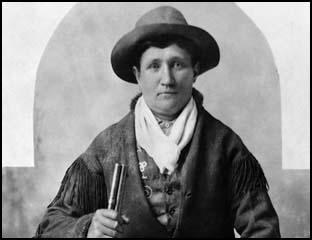

Calamity Jane Doris Day as ‘Calamity Jane’.
It must also be said in her support, however, that she was afraid of nothing, least of all death. She scouted for the army, drove bullock teams, and prospected for gold and silver in hostile Indian territory. But it was as a nurse that she endeared herself to the citizens of Deadwood. During an outbreak of smallpox in the town, she stayed behind to tend the sick and dying, while most of the town’s ‘respectable’ citizenry high-tailed it to safer climes.
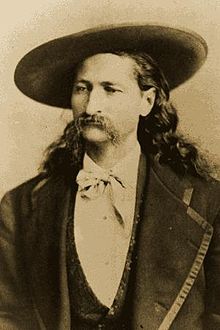
Wild Bill Hickock
Much has been made of her ‘love affair’ with the hugely over-rated gunslinger Wild Bill Hickock. It never happened. He was a happily married man. Besides, Martha Jane was about as sexy and attractive as a pair of army socks! She was also a notorious liar. She did ask that they ‘bury me next to Bill’, and some romantic soul in authority honoured her request. Today, the two ‘non-lovers’ lie side by side in beautifully landscaped plots outside Deadwood, South Dakota. If you visit there you will see several other resting places adorned with the heads of devils and gargoyles. These graves belong to former Deadwood prostitutes. (Even in death they’re still getting shafted). Another grave in the same cemetery is that of ‘Poker Alice’ Tubbs, also a former notorious resident of Deadwood.
Alice ‘Poker Alice’ Tubbs (1851 – 1930)

Poker Alice Tubbs in her dotage.
The best known female poker player in the American West was English. Well, born in Devonshire, anyway. Her family moved first to Virginia, and then to Leadville, Colorado to try their luck during the area’s fabulous silver rush. Iconic photographs of Alice usually show her in her later years, a tough old broad chomping on a cigar, but in her youth she was very attractive. At the age of twenty she married a mining engineer named Frank Duffield, a man who spent most of his spare time playing poker and faro. Alice used to stand behind him watching (and learning the games, especially poker). When Frank had the ill fortune to be blown to smithereens in a mine explosion, Alice was left flat broke and jobless, so she took up dealing faro and poker at a local gambling hall. A blue-eyed beauty who was not a hooker was a rarity in mining towns, especially one adept at dealing and gambling. Soon she was in great demand.
She traveled from town to town, dealing and playing at the best establishments. Jobs were easy to come by because she always drew big crowds wherever she worked. She carried a .38 revolver (and not just for show either), and started smoking cigars while she played. In Silver City, New Mexico, she broke the bank at the Gold Dust Gambling House, pocketing $6,000, a lot of money back then. Shopping sprees to New York City accompanied her winning streaks, but she inevitably returned to the frontier to gamble. In Creede, Colorado, she dealt faro at Bob Ford’s saloon for a while, not long after he had shot outlaw Jesse James in the back. Dopey Bob bragged once too often about duping the jury that found him not guilty on the murder charge, so a second trial was hastily arranged. The second jury was not so gullible as the first, found him guilty, and he was strung up. Doubtless, he’s wandering about somewhere in the after-life, muttering, ‘why didn’t I keep my big mouth shut?’
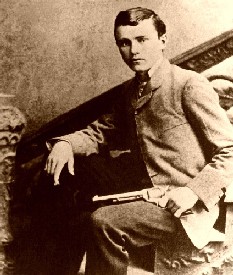
Bob Ford posing with the gun he used to shoot Jesse James
By 1890, Alice was in Deadwood, South Dakota, where she met and married another dealer name Warren Tubbs. Life must not have been all poker playing because they managed to churn out seven children together. On one occasion, a drunken miner came at her husband with a knife, so Alice whipped out her .38 and shot him in the arm. She and Stubbs then went off and bought a ranch, but he contracted TB and died from pneumonia in 1910. Alice quickly hired a man named George Huckert to manage the ranch while she went back to dealing cards again. He proposed marriage to her several times until, finally, she said ‘yes’. ‘I owed him so much in back wages’, she recalled, ‘I figured it would be cheaper to marry him than pay him off. So I did.’ Ah, true love! It’s a dying art. Unfortunately for George, he cashed in his chips, so to speak, that same year and Alice became a widow for the third time.
When Prohibition reared its ugly head in the 1920s, Alice ignored the statute and opened up a saloon/gambling house/brothel near Fort Meade and called it ‘Poker’s Palace’. When a drunken soldier from the nearby fort began destroying her furniture, Alice again pulled out her trusty .38 and shot him as well. At her trial she pled self-defence and somehow got away with it. Well into her 70s, she was still running brothels, but her looks had well and truly gone, and she had become something of an enigma. Quite a character, she had taken to dressing in men’s clothing; a cigar-chomping, gun-toting brothel owner, who spent much of her time reading her Bible. At 75 she was finally sentenced to jail time for repeated brothel ownership, but the governor pardoned her because of her age. In 1930, at 79, she died from complications after a gall bladder operation and was planted in the same cemetery as Wild Bill and Calamity Jane. One of her favourite sayings as she sat dealing cards was: ‘Praise the Lord and place your bets. I’ll take your money with no regrets.’ And, according to her, she did just that, winning over $250,000 in her lifetime. ‘And I never once cheated’, she said.

Leave a Reply